Fixing a gummed-up frog
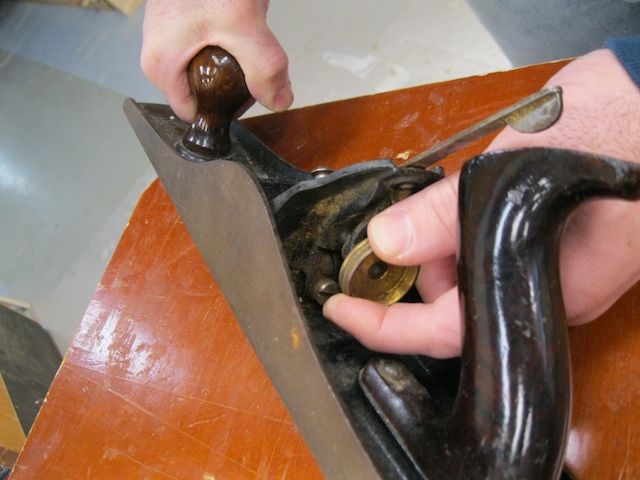
Years of sitting around in the previous owner's shop left this jointer plane caked with grime and impossible to adjust.
I’m planning to build a few projects for which I’ll need to flatten and straighten some very long, wide boards by hand. I hadn’t used it yet, but was counting a vintage jointer plane I bought last year to do a good chunk of that work. I ordered a new blade in preparation for the work, but when I set out to make a few test passes with it I realized that years of built-up grime, dirt and gunk had made it impossible to adjust the plane. The adjustment knob was so tight that I need a pair of pliers to move it.
That just wasn’t going to work. For advice on fixing it, I turned to my colleague, associate art director Kelly Dunton, who gave me a few quick tricks for getting the plane up and running fast.
The first step was to remove the frog by loosening the frog screws and the frog adjusting screw. They were caked grime and would need to be cleaned along with the frog. He wrapped them in a rag, and sprayed them down with penetrating oil. After letting it sit for a few minutes, he simply wiped off the surfaces to remove the dirt and grime. He also sprayed down the adjustment nut and the adjusting bolt.
Since we had to remove the frog anyway, Dunton lapped it on a diamond plate to flatten the surface of the frog, a good trick for making the blade seat better against the frog’s surface. He also cleaned up the rough edges of the castings with a file. Then it was just a matter of reinstalling the frog and spraying the screws and adjustment knob with lubricant, in this case, Boeshield T-9.
That’s all it took. Now the adjustment knob spins easily and the blade sits snugly. I took a few quick passes on a scrap piece of walnut to test it out. The shiavings were thin and wide. Not bad for a 10-minute tune-up.
If your older plane is need of a little more TLC, check out Rollie Johnson’s piece from FWW for a more in-depth tutorial on tuning up an old plane.

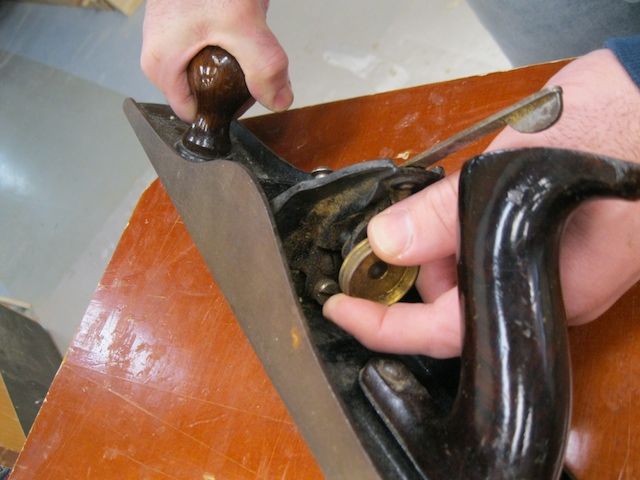
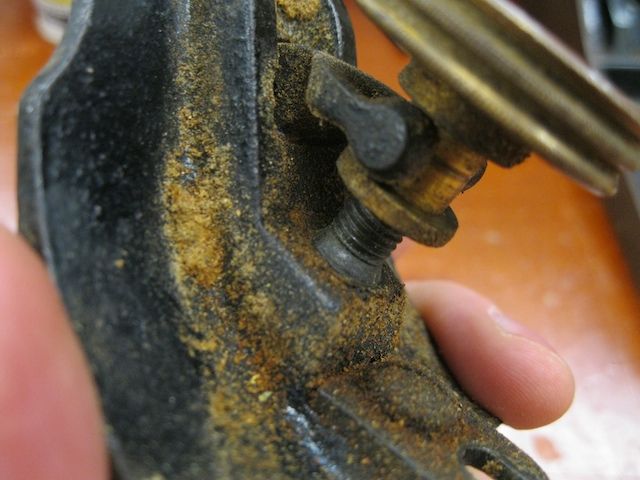

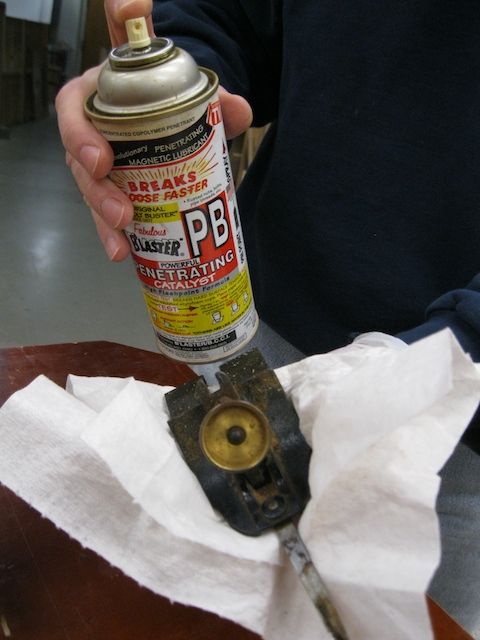
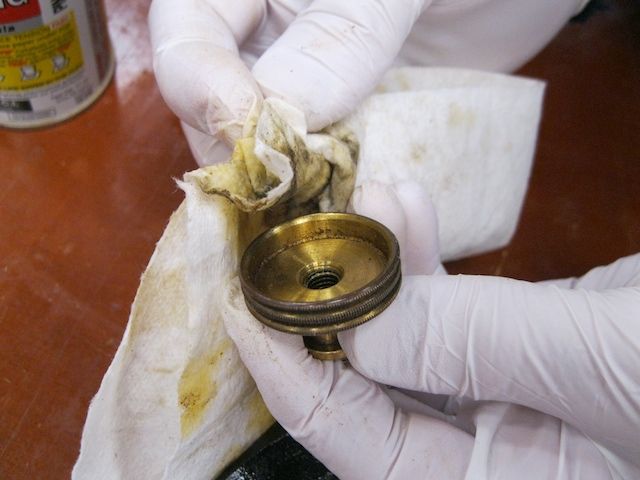
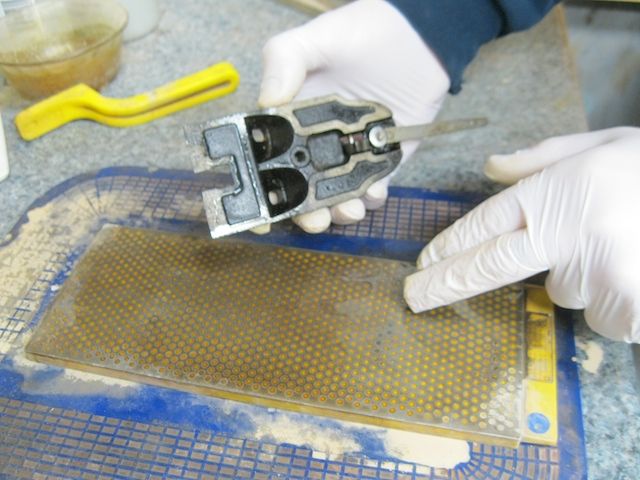
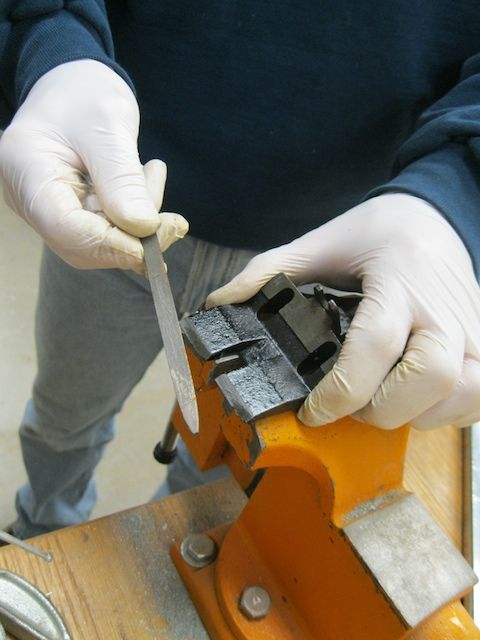
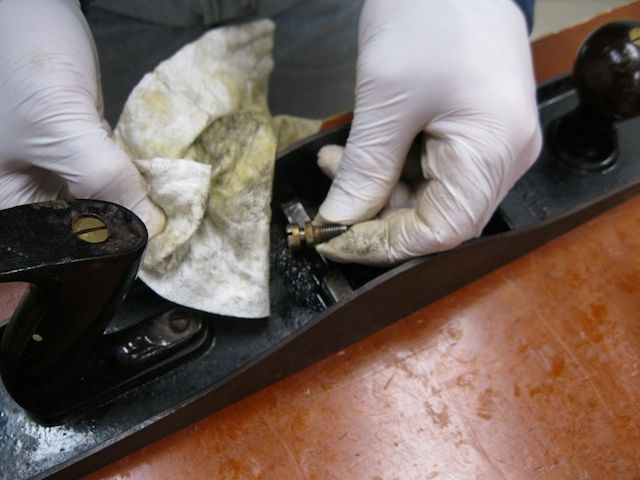
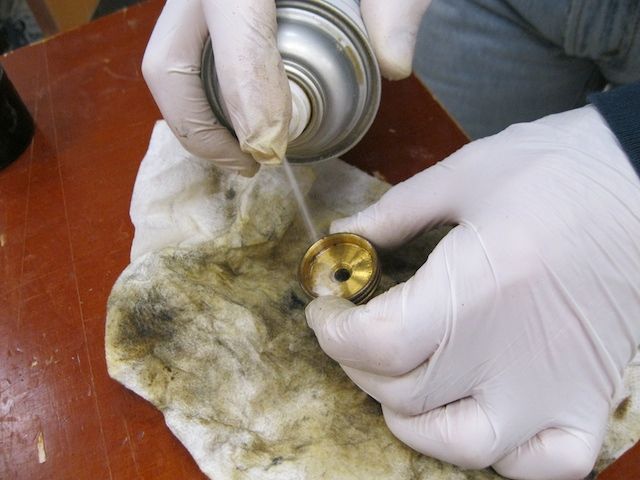
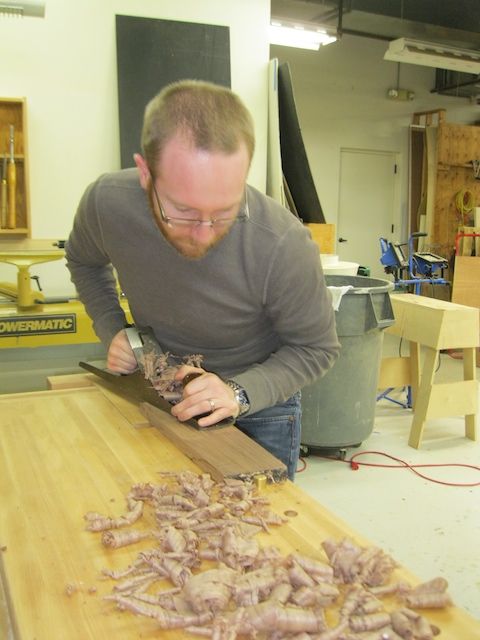





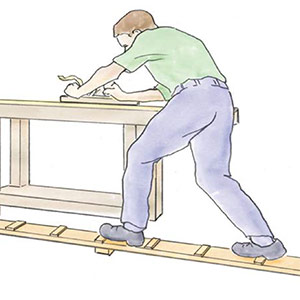












Log in or create an account to post a comment.
Sign up Log in